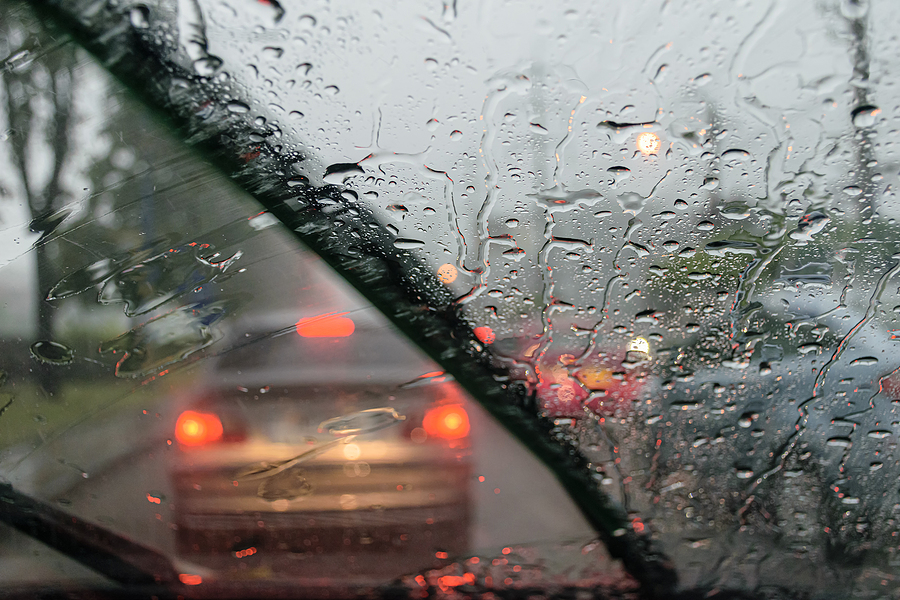
Here’s a quick summary
- Regularly maintain vital fluids, especially with winter-specific variants.
- Ensure the battery’s health and check all vehicle lighting for functionality.
- Routinely inspect and maintain brake pads and system for icy conditions.
- Equip your car with an emergency kit containing winter essentials.
- Plan your winter travel route in advance, accounting for weather and informing someone of your plans.
About 900 people die yearly on winter roads. Even though Florida obviously isn’t known for frigid winters, it can get extremely cold in our state. Tallahassee reported a low of 18 degrees in 1997, and Jacksonville had a mix of snow and sleet in 2010. If your area ever faces a cold snap, you’ll want to know how to prepare your car for winter.
Even if your area doesn’t face a cold snap, it’s still a good idea to be prepared for winter travel. Around the holidays, there are many other vehicles on the road, and if you’re traveling long distances, it doesn’t hurt to be prepared.
The Eberst Law Firm will be here to help you obtain maximum compensation if a negligent driver causes an accident that leads to an injury. Call 1-888-CALL-JON or contact us online for a free consultation.
Don’t have time to read the whole article? Check out this quick summary:
- Regularly maintain vital fluids, especially with winter-specific variants.
- Ensure the battery’s health and check all vehicle lighting for functionality.
- Routinely inspect and maintain brake pads and system for icy conditions.
- Equip your car with an emergency kit containing winter essentials.
- Plan your winter travel route in advance, accounting for weather and informing someone of your plans.
Check Your Fluids
Maintaining your vehicle’s fluids is crucial to ensure it performs optimally during winter. Here’s a detailed breakdown of what to do:
Engine Oil
The engine oil is the lifeblood of your car, and it’s even more critical during winter. It lubricates the engine’s moving parts and prevents them from wearing out prematurely. To prepare your car for winter, consider these steps:
- Check your engine oil level using the dipstick. Ensure it’s at the appropriate level, typically between the “min” and “max” marks. Add oil if necessary, but avoid overfilling.
- Consider switching to a winter-grade oil with a lower viscosity rating (e.g., 5W-30). This oil flows more smoothly in cold weather, ensuring your engine stays lubricated even at the coldest temperatures.
Brake Fluid
Brake fluid is vital for maintaining responsive brakes, which are essential for safe winter driving. Check your brake fluid level in the brake fluid reservoir. It should be between the “min” and “max” marks. If it’s low, it might indicate brake pad wear.
The quality of the brake fluid is also essential. Brake fluid absorbs moisture over time, affecting its performance and potentially leading to disastrous results. If your brake fluid looks discolored or you’ve used it for a while, replacing it may be a good idea.
Coolant
The coolant in your vehicle’s radiator helps regulate the engine’s temperature. To prepare your car for winter, follow these steps:
- Ensure your coolant is suitable for freezing temperatures. The ideal mixture is usually a 50/50 combination of antifreeze and water. This mixture prevents the engine’s cooling system from freezing and overheating.
- Use a winter-specific windshield washer fluid that won’t freeze in colder temperatures. Doing so will ensure your windshield stays clean and you maintain good visibility even in adverse weather conditions.
Transmission Fluid
Inspecting and maintaining your transmission fluid is essential, as it plays a significant role in the smooth operation of your vehicle, especially during the winter travel season.
Check your transmission fluid level using the dipstick if your vehicle has one. Ensure the level is within the appropriate range. If the fluid appears discolored or smells burnt, it might be time for a transmission service.
Examine Your Battery
Colder weather can significantly impact your car’s battery. One of the best ways to be ready for (slightly) colder weather is to ensure your battery is in good condition.
One way to do so is to check for clean battery connections. Corroded or dirty terminals can inhibit the flow of electricity, potentially leading to starting issues. Also, consider having a load test performed on your battery. This test checks the battery’s capacity and condition. If it’s weak, replace it to avoid getting stranded in the cold.
Test Your Lights
Proper lighting is paramount for visibility and safety during winter conditions. Here are some tips to make sure your lights work when you need them the most.
- Headlights: Vehicles with good headlights are about 20% less likely to be involved in an accident. Check to make sure your lights work correctly. Ensure they provide proper illumination for seeing the road ahead and being seen by other drivers.
- Brake lights: Verify your brake lights are in working order. Functional brake lights are crucial for communicating your stops to other drivers, especially on rainy roads.
- Turn signals: Ensure your turn signals are functioning properly. Clear communication with other motorists becomes even more critical when the weather turns bad.
- Emergency flashers: These are essential for roadside emergencies, such as when your vehicle breaks down in rainy conditions. Emergency flashers ensure that other drivers can see you and your vehicle, enhancing safety.
Check Your Brakes
Brakes are critical for winter safety, especially when stopping on icy roads. First, inspect your brake pads for wear. If they’re worn down, replace them as needed to maintain optimal braking performance.
You should also ensure your brakes are responsive. If you notice any issues, such as sponginess or reduced braking power, have them examined by a professional mechanic to avoid potential accidents. The court could find you negligent if you cause a wreck due to failing to maintain your brakes. If that happens, you’ll be liable for the other driver’s medical bills and other damages.
Prepare Your Car for Winter Travel: Put Together an Emergency Kit
Unpredictable winter weather can leave you stranded in challenging conditions. Create an emergency kit so you’ll be ready if the worst happens. Your kit should contain the following:
- Blankets
- Warm/waterproof clothing
- Non-perishable food
- Water
- A first-aid kit
- A flashlight
- Necessary tools
These items can provide comfort, sustenance, and safety should you find yourself in unforeseen circumstances. These circumstances include getting stuck on the side of the road after experiencing an unexpected breakdown.
Plan Your Route Ahead of Time
Effective planning is crucial for safe winter travel. Take into account weather conditions, road closures, and alternative routes. Let a trusted person know your travel plans. They can check on your progress and alert authorities if necessary.
Also, monitor weather and road conditions to make informed decisions on when and where to stop, if needed. Staying informed is critical for ensuring your safety during winter travel.
Contact The Eberst Law Firm if You’re Involved in a Winter Car Accident
Despite all precautions, accidents can still happen. If you find yourself in a winter car accident, consider consulting with legal experts like The Eberst Law Firm. Our legal professionals can help protect your rights and guide you through seeking compensation for damages and injuries resulting from a winter accident.
If you want to schedule a free case review, please use our online form or call 1-888-CALL-JON.
